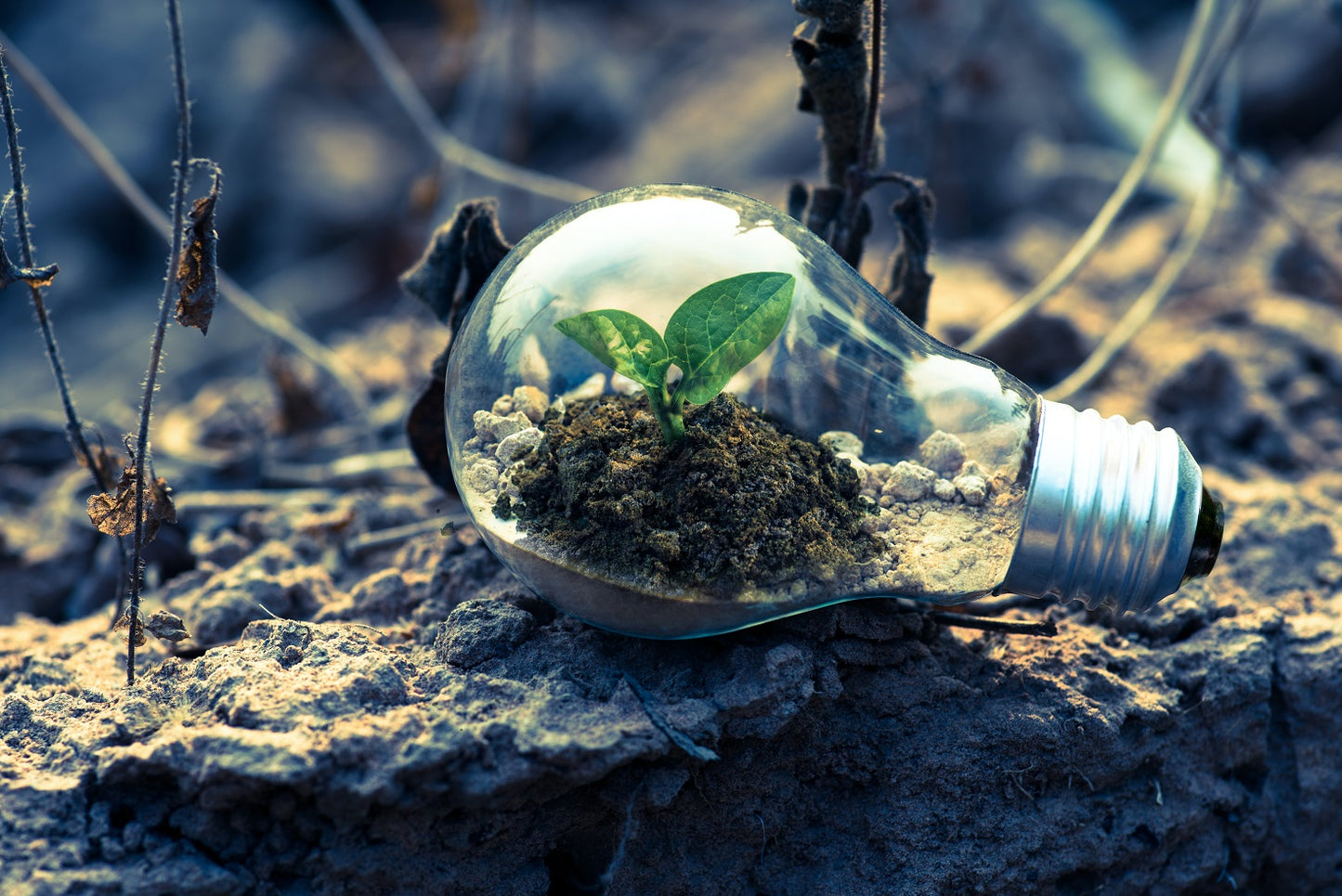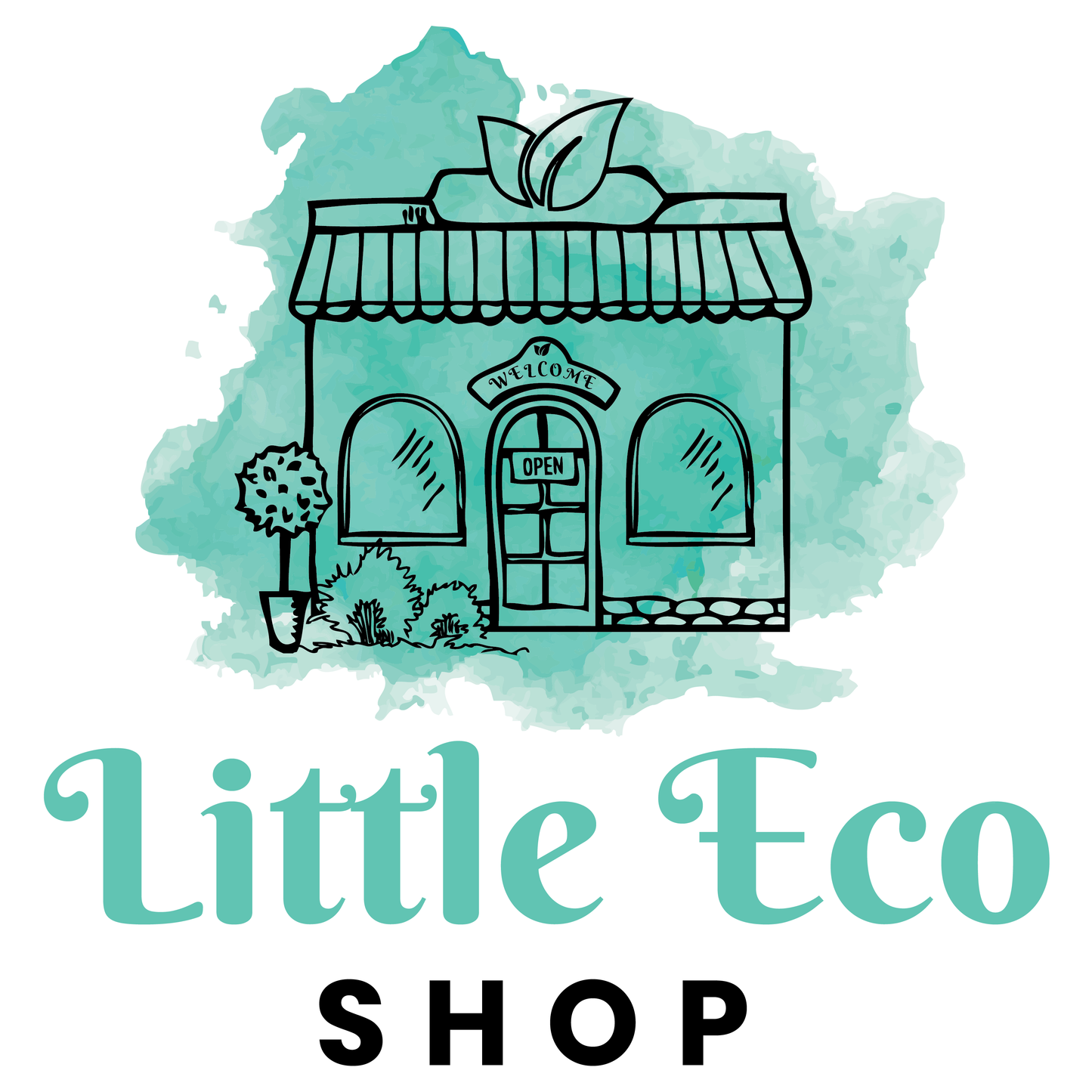
If, like us, you grew up on a steady media diet of Back to the Future and Beyond 2000, you’re probably equally as disappointed that we’re not yet rocking hoverboards and flying cars. The upside is that, in place of these insanely cool, yet ultimately useless inventions, scientific ingenuity has been geared towards the most pressing problem of our time: climate change. Adversity breeds innovation and, with the world’s brightest minds squared firmly on climate action, we are beginning to witness the awesome potential for regreening our world and keeping the cap screwed tightly on 1.5 degrees warming. Sustainable start-ups are moving beyond the goal of net zero, towards climate positive ventures that actively remove carbon from the atmosphere. Here are our predictions for the future of greenovation …
Compostable materials that perform like plastic
Plastic is omnipresent, carcinogenic, and it’s making a litter bin out of waterways, animals, and our very own bods. Yup, you read right: we consume the equivalent of a credit card’s worth of plastic every week (for more shocking plastic facts, visit here and here). It’s estimated that 8.3 billion tonnes of plastic has been produced since the material’s inception in the 1950s and 60% of it now sits in landfill and the environment.
The biggest problem with plastic is that it’s become an integral part of our lives and is going nowhere fast. It’s not enough to dictate that people swap plastic conveniences for reusable alternatives that perform differently and are more expensive. The current MO is working gradually on a micro level, but not quickly enough.
What we need are compostable and affordable alternatives that perform like plastic, but aren’t, and for these to be taken up by large manufacturers, which would have a big impact on emissions. We’re already seeing movement in this arena, with green startup, Mori, producing a food wrap from natural silk protein, to replace cling film and plastic food packaging, while VTT Technical Research Centre of Finland has made similar inroads using wood, creating a plastic-like material from agricultural and forestry by-products.
MakeGrowLab gets a gold star for decimating plastic and landfill with one stone. They’ve created a method of transforming food waste into a food-safe cellulose packaging material, called Scoby, in just a few days. We’re envisioning (and hoping and praying for!) huge investment and innovation in clean plastic impostors over the next decade, and the eradication of virgin single-use plastic.
Affordable and fast-charging electric cars
The sluggish uptake of electric cars can be blamed on their equally slothful battery charge time: it takes eight hours to fully charge your average EV. Even if it’s not every day we need to make a hasty dash to the shops, our child’s school, or the emergency room, the potential that we mightn’t be able to, is a huge barrier to our embracing EVs. But as battery technology improves, so will our fondness for buying electric, and it’s already happening. StoreDot has invented an EV battery that charges to capacity in ten minutes, without any battery damage, which has been noted with other quick-charging initiatives.
Cost is another impediment to EV ownership, but as battery performance improves, and supply balances with demand, the price of EVs will fall. Electric cars are slated to become cheaper to own and run than internal combustion engine vehicles by 2027, with pricing driven down by tightened emissions regulations and the rise of renewables. It’s predicted that EVs will outnumber petrol guzzlers on the road by 2044, and we are here for it!
Smart supply chains
Supply chains are the dirtiest portion of the consumer goods sector, accounting for 80% of its GG emissions and over 90% of its environmental impact. Overproduction, and the shipping and storage of excess goods, is a huge factor in this pollution, but an unlikely solution has been found in AI. Tech company, IndustrialML, has developed machine learning to reduce waste and the use of raw materials in factories, enhancing production capacity, while cutting costs and environmental footprints. Research by Microsoft and PwC concluded that machine learning could slash 4% off global emissions by the year 2030.
The robot takeover is upon us, but never fear, it’s great news for the planet. With the astronomical rise in demand for online retail and food delivery services, brought about by lockdowns, the GG emissions for these sectors have risen in tandem. Growing adoption of delivery drones and robots will reduce the number of vehicles on the road, while automated inventory management will reduce unnecessary production and the housing of excess goods, to curtail emissions. California-based start-up, Kiwibot, is leading the charge in autonomous robot food delivery, while Irish company, Manna, is drone delivering 2000-3000 orders every day, using suitcase-sized drones that fly at 80km an hour. Who needs flying cars when a drone can satisfy your penchant for online shopping in under an hour?
Agriculture meets AI
An odd couple to rival Angelina and Billy Bob, but artificial intelligence can optimise the growth of indoor and vertical farms, increasing yields, while reducing the emissions involved with traditional agriculture, which is a tremendous blight on the environment. Regular farming uses extensive land and is labour, chemical and energy intensive, while vertical farms are indoor structures that stack plants from floor to ceiling, so that much can be grown in a relatively small space.
Plenty, another start-up calling California home, has incorporated machine learning into its prototype for a 2-acre farm that can produce 720 acres’ worth of food – that’s 350 times the yield of a traditional farm. Their AI ensures that the crops receive optimal light and water, for higher yields and zero wastage. Embracing innovations in agritech on a large scale will restore the health of soil and waterways, while curbing emissions and water usage.
Green electronics
2021 saw an estimated 57.4 tonnes of electronic waste produced, worldwide, with only 20% of it properly recycled, and this problem set to worsen: it’s predicted that e-waste will account for 15% of global emissions by 2040. By shifting away from raw materials and plastics and incorporating bio-based materials in manufacturing, as well as improving the capture and recycling of used electronics, we can drastically reduce the environmental impact of this sector.
Dirty tech brands take note: Fairphone has created the blueprint for electronics manufacturers to aspire to, now using 41% post-consumer recycled plastics, successfully refurbishing 40% of used smartphones, and recycling those that couldn’t be refurbished, with a view to improving these stats. The Fairphone 3+ has been designed to nearly double the average lifetime of a smartphone, from 2.7 years to 5 years, creating a 30% emissions reduction per year of use, for the life of the phone. We’ll soon see green design and manufacture afforded the same consideration as sleek appearance and seamless UX on a broad scale.
